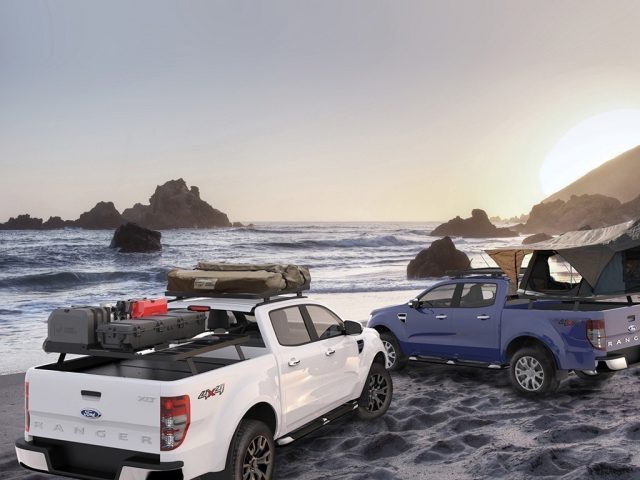When you are going on a road trip, there’s no better vehicle to go with than a pick-up. After all, you want to be able to carry as much as luggage as possible.
Modern pick-ups, like the Ford Ranger, are especially perfect for road trips because not only are they comfortable, they are also workhorses.
Loading your workhorse properly when going on a road trip is a matter of safety and it is important to do it right. Here are seven pro tips from Ford on how to load your pickup properly.
1. Load capacity
The combined weight of the driver, passengers and cargo should never exceed your pick-up’s load capacity. It may be tempting to overload but an overloaded pick-up is harder to control and you risk rolling over. Your car owner’s manual will have everything you need to know about your vehicle’s load capacity.
2. Use a proper fitted cover for your load box
The area where you put a load on a pick-up is called a load box (also known as a tray or bed). The load boxes come in lots of different specs and dimensions. Instead of folding a tarp to fit your load box, it is better to invest in a properly fitted cover. Some come with elastic snaps that secure them, while others can be anchored with ratchet straps. To better secure the cover and protect your load box from damage, use only the recommended attachment points – don’t cut into the load box to make your own. If your load box comes with three sets of attachment points, always use the points at the front (closest to the cabin), plus at least the centre or rear points. The Ranger Wildtrak, for instance, is equipped with a roller shutter as standard. The roller shutter can be locked ensuring your belongings are always safely stored.
3. Use car tech to your advantage
Modern cars come with a lot of technology to make your driving experience better. The Ford Ranger, for instance, comes with a reverse camera that may come in handy when your cargo is stacked high. Other tech like the Adaptive Load Control maximizes control when carrying heavy loads – and Hill Descent Control, is designed to automatically apply braking to slow the vehicle to a set speed in off-road downhill conditions.
4. Protecting fragile cargo
Think ahead: what does your trip to the hardware store involve? Wallpaper, carpets and wooden panels can easily flop around and get damaged on the way home. Luckily, you can find just the thing to protect them a few aisles down – pick up a roll of stretch cling film and use it to wrap both ends of your haul.
5. Use nets to secure lighter cargo
Don’t let the appearance of small loads deceive you. Just because they fit comfortably in your load box doesn’t mean they will stay put. Secure lighter items, such as luggage, with custom-made and fitted nylon or polyester fibre cargo nets. The rot- and decay-resistant nets are light and can be easily stored.
6. Use ratchet straps for furniture and household items
When carrying large furniture or household items, try using ratchet straps made of strong synthetic fibre. Secure your straps to the piece of furniture itself, or crisscross on top to prevent movement in all directions.
7. Distribute weight evenly
Unlike furniture, construction material such as gravel or sand often allow for better weight distribution – and you should take advantage of that. An uneven weight distribution may make steering more difficult. Keep the heaviest loads as far forward and as low as possible. Keeping your payload forward (near the driver and passenger) will help prevent the front of your pick-up
from becoming light and help you stay in control, especially when wet.
When it comes to packing a load box, a load is only secure when items can’t slide, fall onto the road, or become airborne. While you may not be an engineer, these tips can help you think like one – so you can get where you’re going with your load – and nerves – intact.


